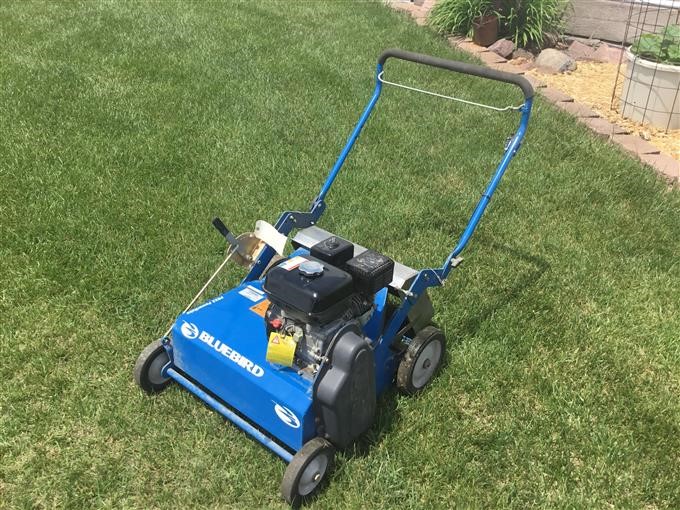How To Save Your Lawn With Power Raking And Dethatching
Power raking removes thatch from the lawns surface, all of the organic debris such as lawn clippings, leaves, and dust forms an interwoven layer just above the soil line. A small layer of thatch is beneficial to your lawn, as it will aide in the natural decomposition cycle. However excess thatch will cause problems to the health of the lawn, the grass may even start growing out of the thatch layer if left unchecked. Other problems include fungus growth, fertilizer will be less effective, water will not penetrate, and the lawn will also be more sensitive to burning in the summer months. Damaged lawns can also benefit from power raking as it will remove the vast majority of dead grass and leave you empty soil space to replant new seed.
What is Power Raking?
Power Raking is the process of lifting the thatch layer to remove debris and improve growth of the lawn. Power raking is the preferred method of raking for most lawns, as this method reduces the chance of organic debris from falling into the lower layer while still providing a level surface to replant. Power raking also removes any surface root competition for moisture and nutrients, as well as any low growing weed seeds that may have been found on the surface. With a power rake you may be able to remove as much as 8 bags of organic debris from your lawns surface in just a few passes, without causing excessive damage.
How to power rake
Power raking is also called dethatching. The practice of dethatching is not for the faint of heart. It requires using a big power raking machine to complete the job. By using a powered lawn tool like a power rake, it will be easier to remove thatch and maintain the health of your lawn. The best power rakes to use are the flail type which most modern power rakes currently are. These rakes are versatile and can be used for most grass sizes. Some rakes use hydraulics, but many also use belts and manual or electric cables. Most of the time its easier and even more cost effective to have a professional do it for you.
Powers of Dethatching
Dethatching is the process of removing the thatch layer from the grass, leaving a bare surface ready for new grass seed to be seeded. Most thatch is decomposed organic matter, which causes your grass to be more tender to water and wear. Dethatching also rids your lawn of the fungus that occurs when the season has been moist. If you have a problem with your lawn being resistant to fertilizer, dethatching will help. I do not recommend power raking alone, as that can leave you tired on the lawn, rather two or more people can be combined in force to rid the lawn of excessive thatch.
Should I Power Rake in the Fall?
Once the leaves have fallen from the trees, this is a great time to start power raking. This is an ideal time to power rake, as you can enjoy the autumnal foliage and the fresh air, but still get a significant amount of debris out of your lawn. This will take longer to complete, as there is a greater amount of natural debris in your lawn. However, it is definitely the most effective way to reduce the amount of dead grass that is left behind after your lawn is mowed. Power raking is done when your lawn is already cut, but the leafy mulch has not been removed, this is called the green top. A dethatch should only be done in the fall or spring after your lawn has been cut. This will help to reduce the amount of dead grass that your lawn still has left behind.

Conclusion
So why is power raking and dethatching worth it? It’s a bit of a misnomer that power raking and dethatching are only for those homeowners who are preparing for a particular planting season. They are best suited to any lawn, regardless of the depth of the grass growth or how aggressive the lawn is grown. All you need to do is power rake your lawn, take off some of the the thatch layer, use a rake or your lawnmower to collect debris, and you can successfully cut through the layer and the rest of your lawn will be ready to recover.

